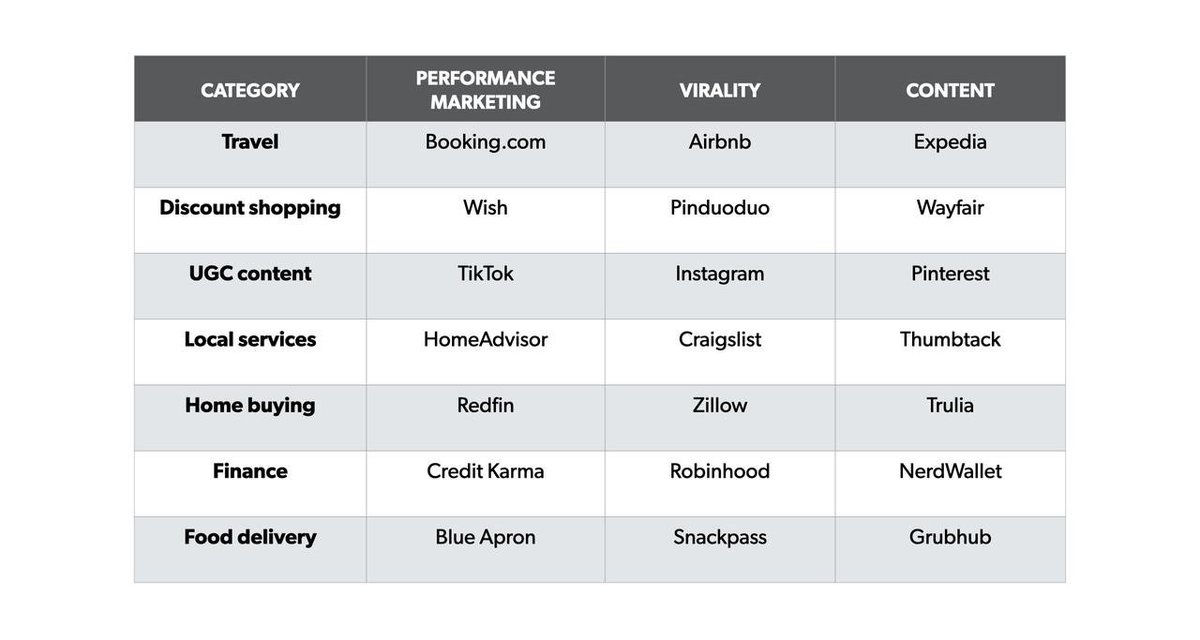
As someone working on growth at Airbnb, I've always been fascinated by Booking.com –– a tiny startup in the Netherlands that became one of the greatest acquisitions of all time through world-class growth.
Read on for rare insights into their early growth strategy 👇
Read on for rare insights into their early growth strategy 👇
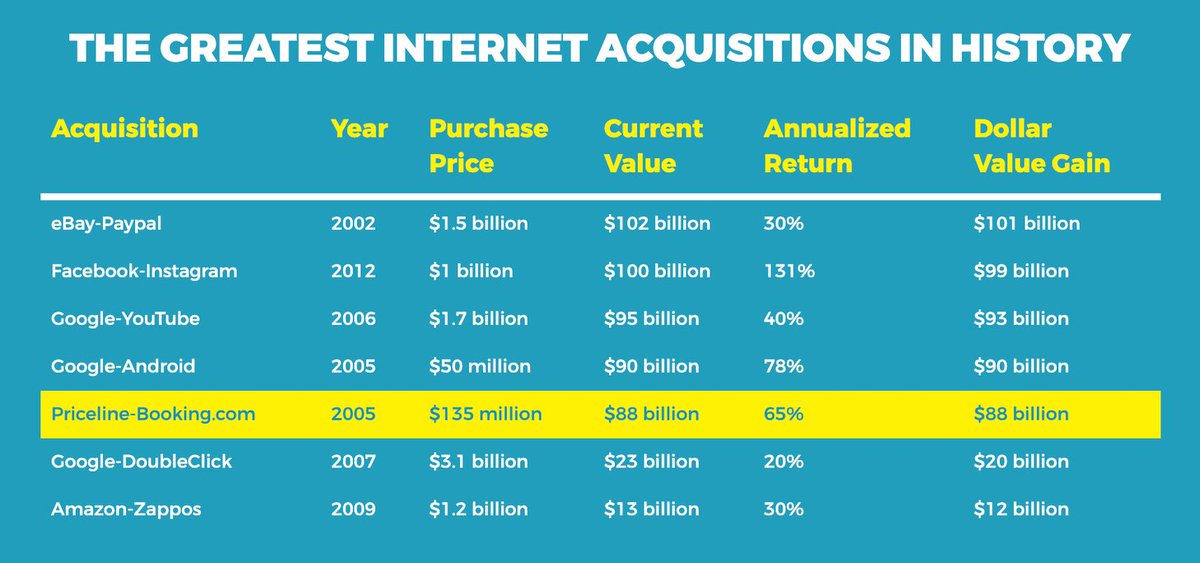
1/ Their performance marketing team drove their supply strategy
"When paid marketing is just a function, optimizing campaigns in a cubicle, it doesn’t inform the rest of the business and the funnel doesn’t work. There just isn’t much you can do to optimize paid ad campaigns."
"When paid marketing is just a function, optimizing campaigns in a cubicle, it doesn’t inform the rest of the business and the funnel doesn’t work. There just isn’t much you can do to optimize paid ad campaigns."
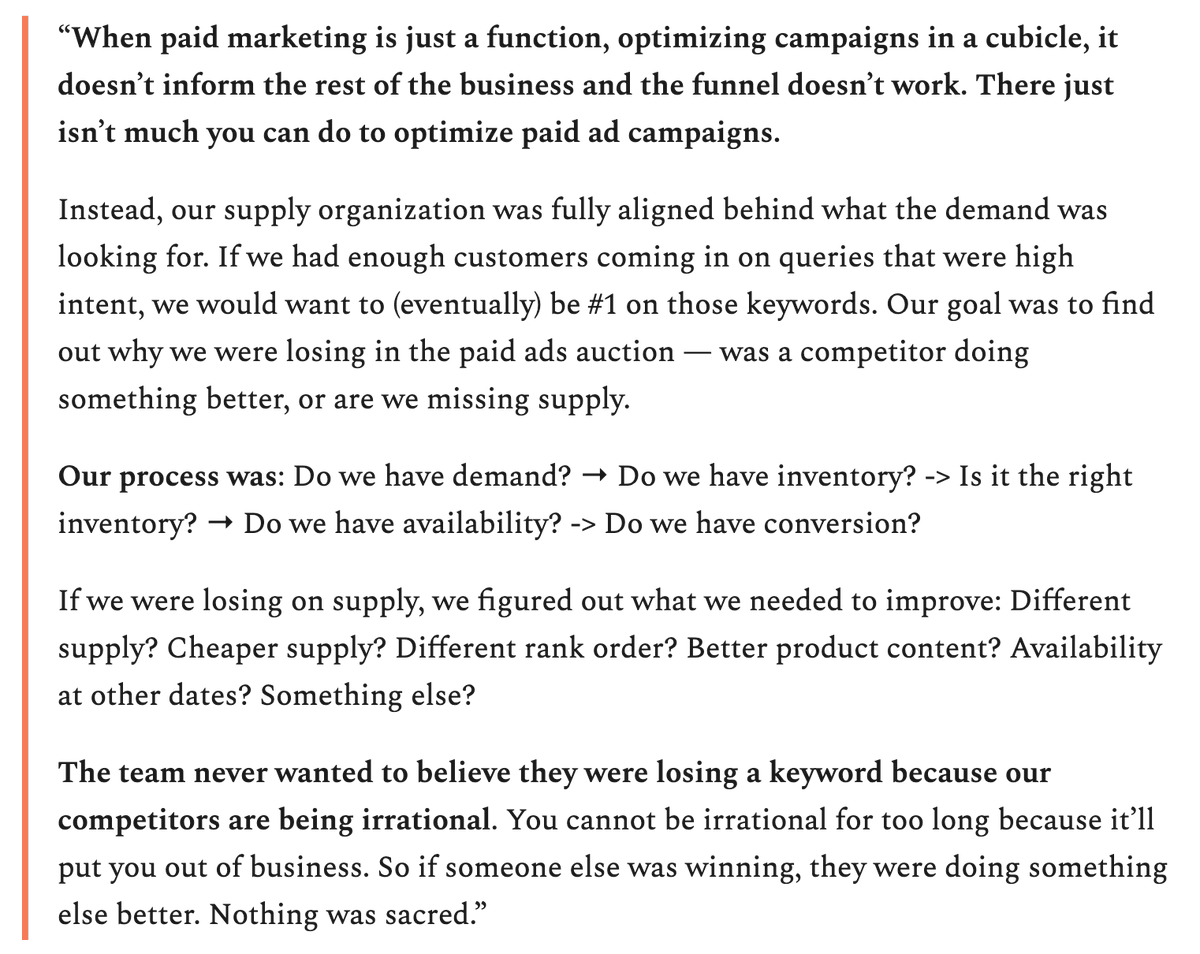
2/ The performance marketing team was only two people, even past $100m/year spend
"It was actually only two guys: one banker and one coder. Peter (the banker) was extremely competitive. He would scream and shout when he was losing his #1 position."
"It was actually only two guys: one banker and one coder. Peter (the banker) was extremely competitive. He would scream and shout when he was losing his #1 position."
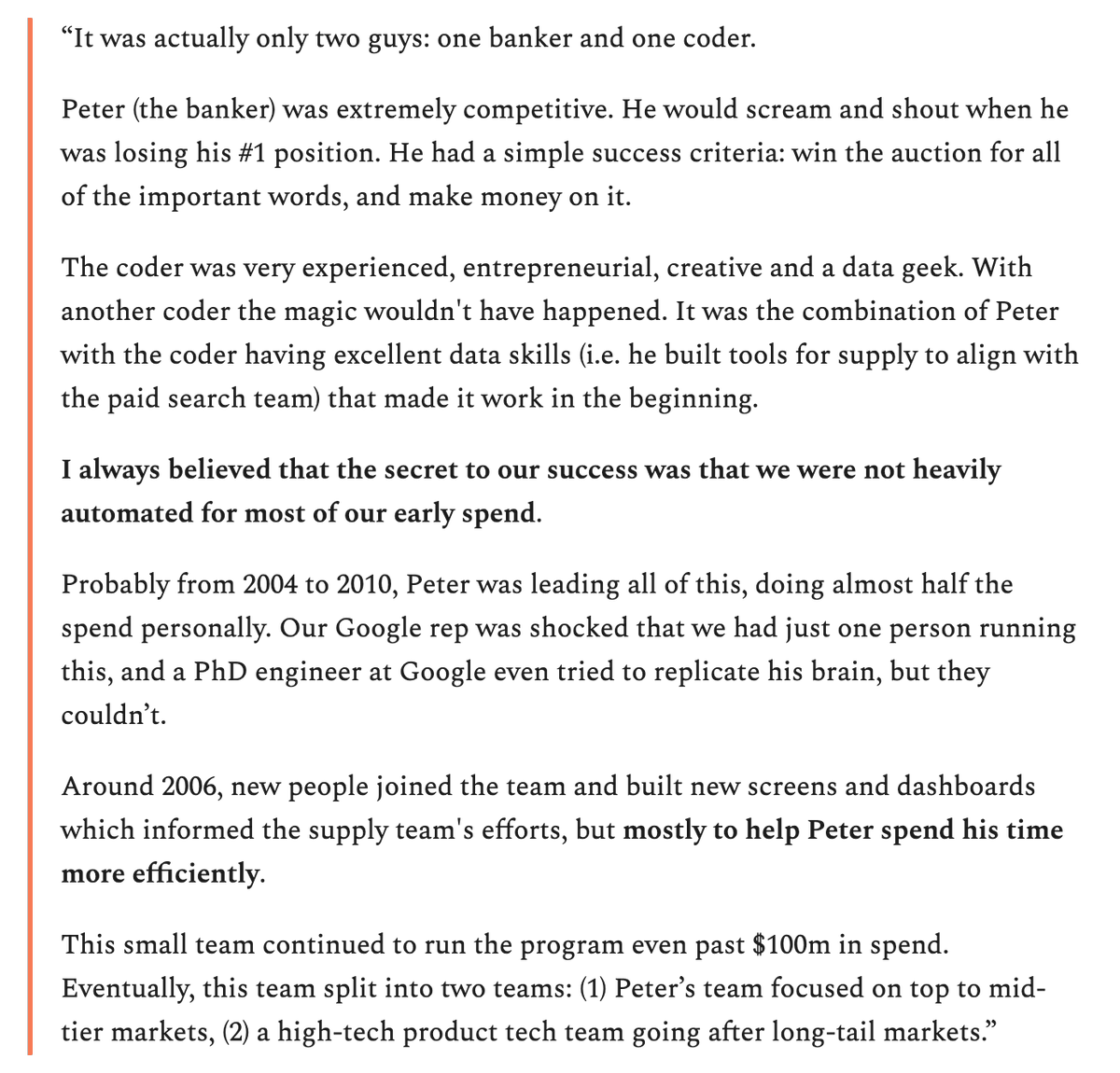
3/ They obsessed over Product-Channel Fit
"People talk about Product-Market Fit. We realized we needed Product-Channel Fit. And it became clear Google AdWords was that for us."
"People talk about Product-Market Fit. We realized we needed Product-Channel Fit. And it became clear Google AdWords was that for us."
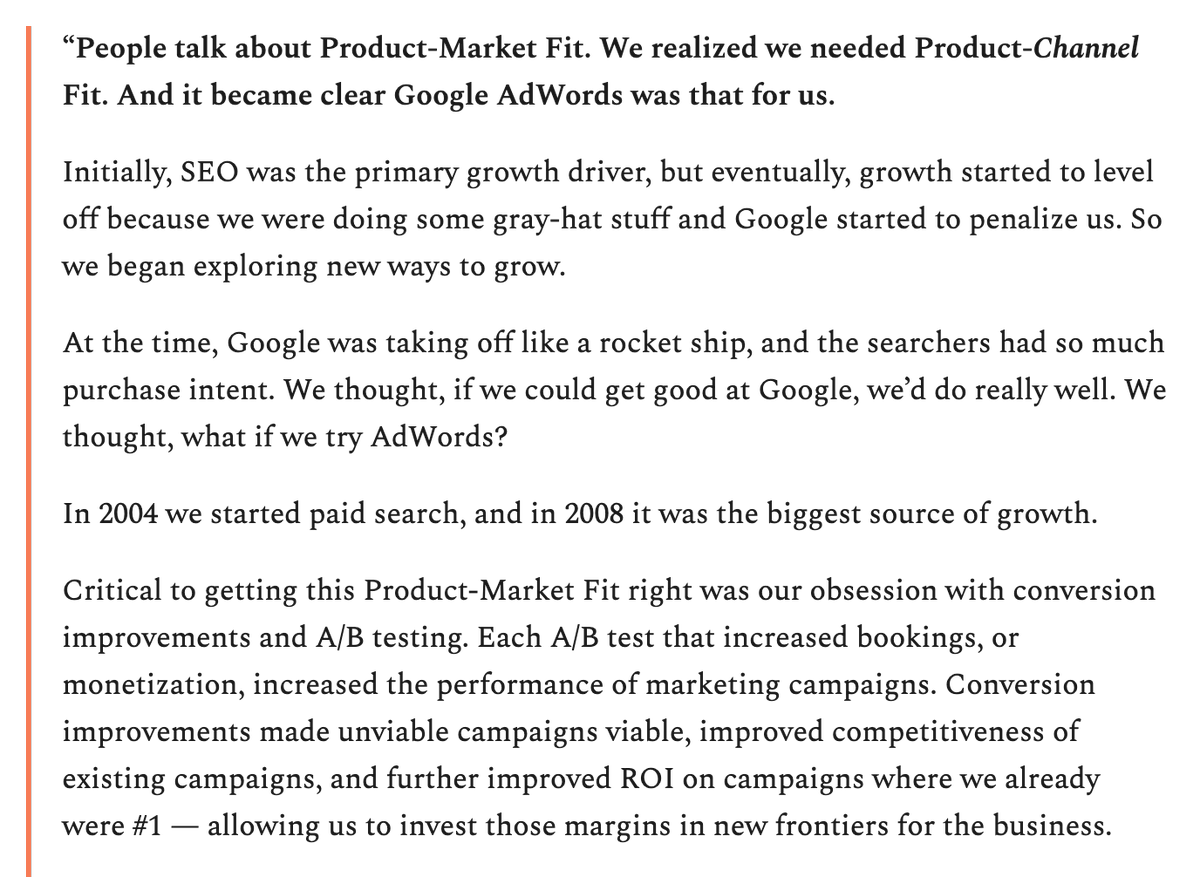
4/ They turned disadvantages into advantages
"Unlike our competitors, we didn’t have access to chain hotels in big markets, so we focused on long-tail markets early-on. So we build inventory in secondary and tertiary destinations, where the other players didn’t have hotels."
"Unlike our competitors, we didn’t have access to chain hotels in big markets, so we focused on long-tail markets early-on. So we build inventory in secondary and tertiary destinations, where the other players didn’t have hotels."
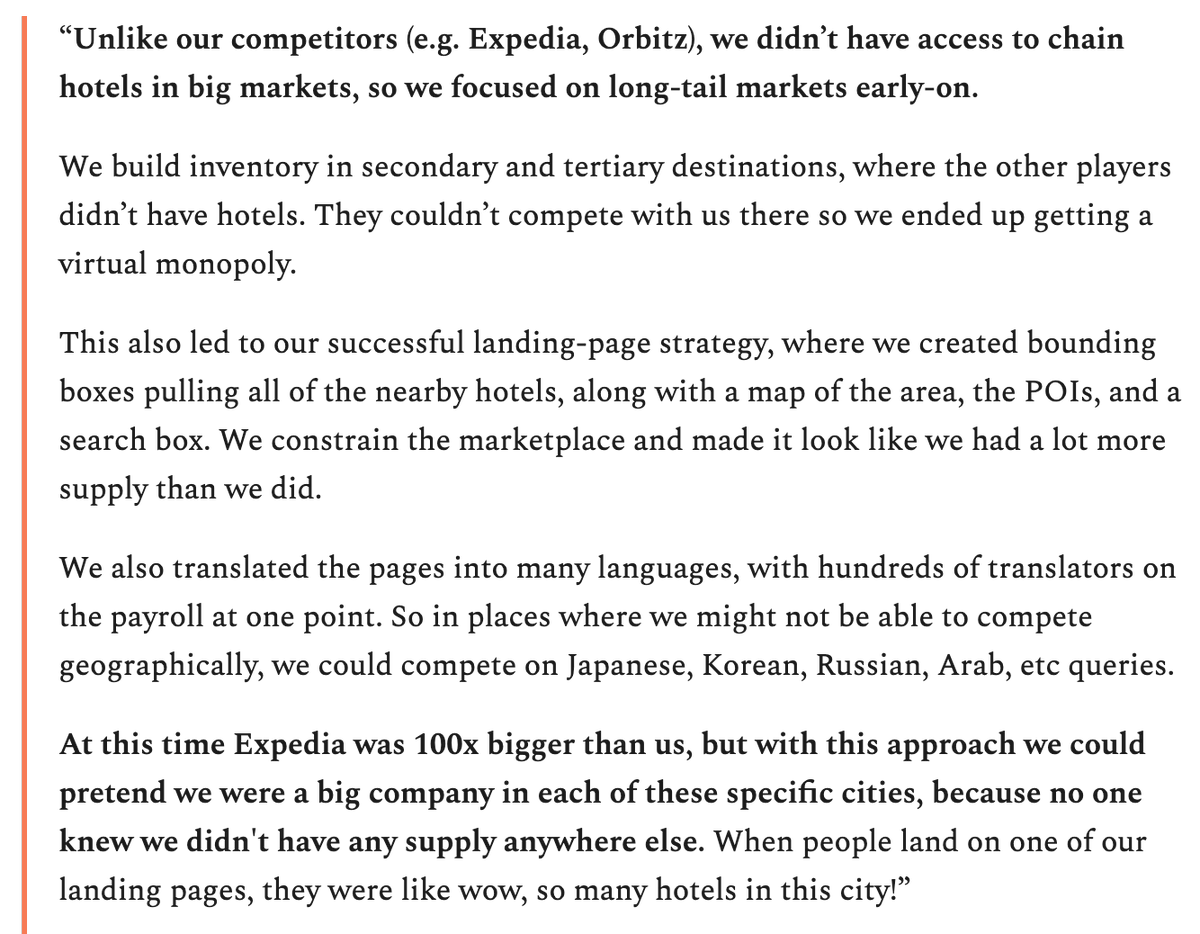
5/ They used Google Translate for localization
“Team members were upset with our ad copy sometimes so we asked them to give us better copy, which we A/B tested. The Google copy often won. We would keep what worked regardless of what would be better according to local speakers.”
“Team members were upset with our ad copy sometimes so we asked them to give us better copy, which we A/B tested. The Google copy often won. We would keep what worked regardless of what would be better according to local speakers.”

6/ For more stories, check out this week's newsletter and the First Round Review piece.
And again, a HUGE thank you to @ajknws (CMO of Booking from 2003 to 2012) for generously sharing his time and stories from the early days 🙏
lennyrachitsky.com/p/top-5-most-i…
firstround.com/review/drive-g…
And again, a HUGE thank you to @ajknws (CMO of Booking from 2003 to 2012) for generously sharing his time and stories from the early days 🙏
lennyrachitsky.com/p/top-5-most-i…
firstround.com/review/drive-g…
• • •
Missing some Tweet in this thread? You can try to
force a refresh

